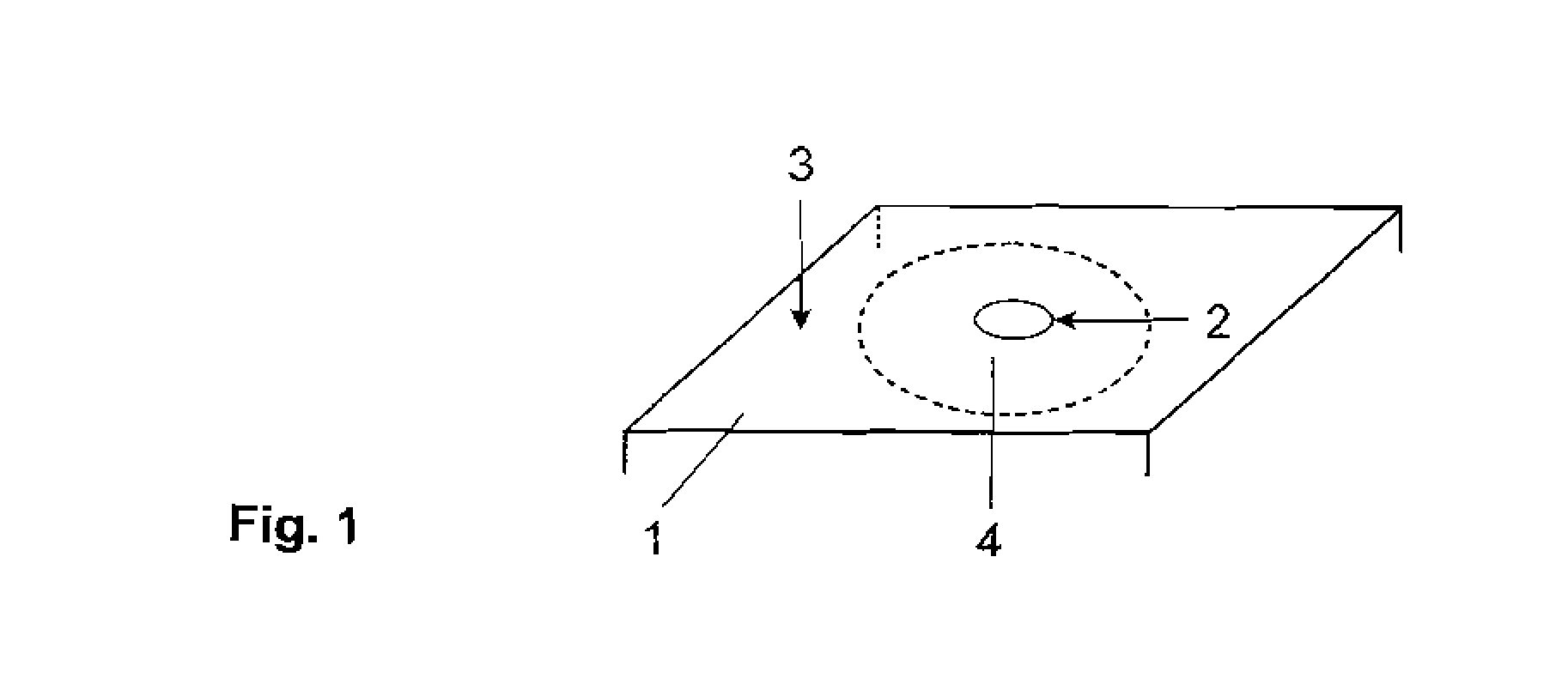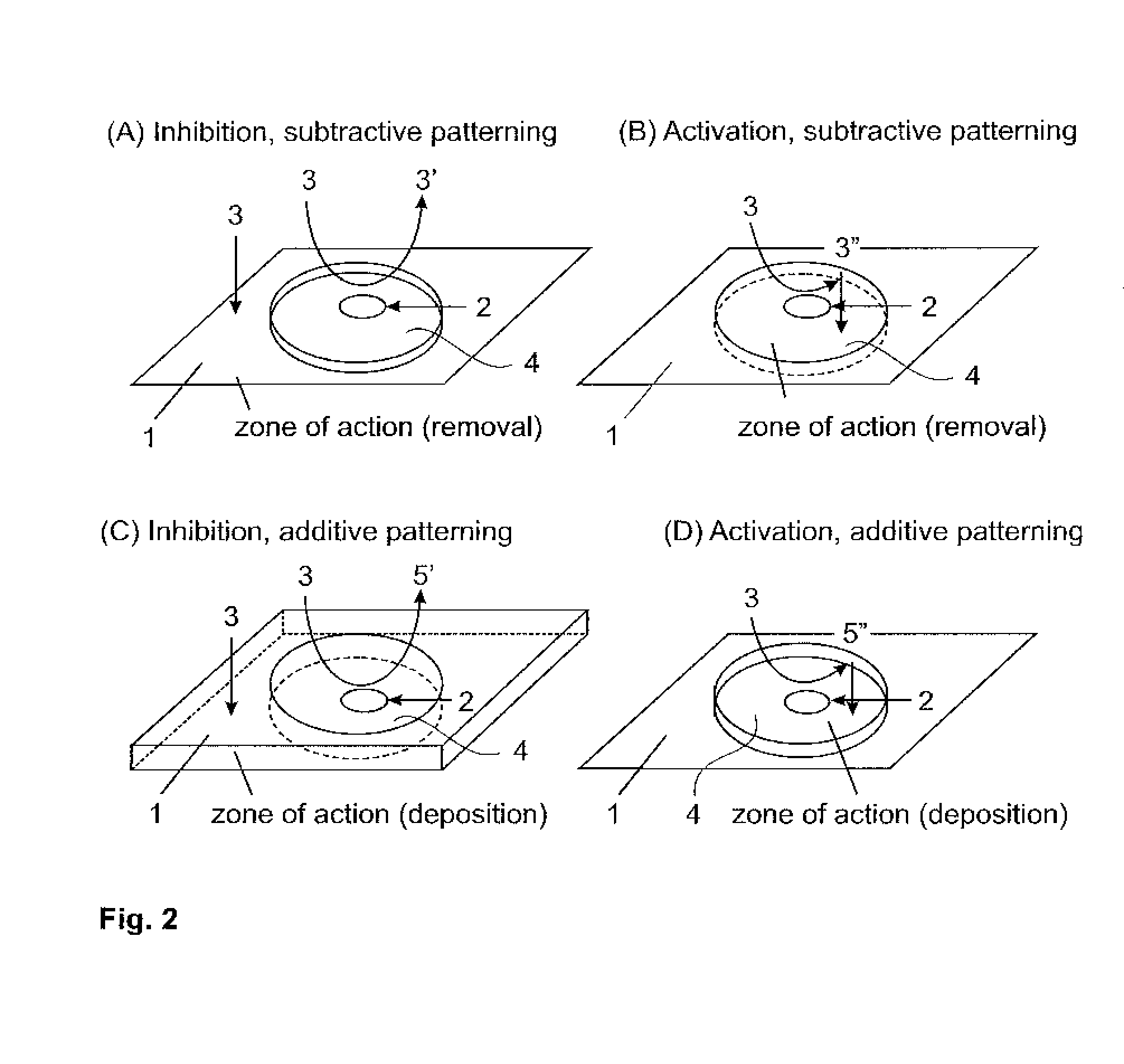Method for processing a surface
a surface and processing technology, applied in the field of surface processing, can solve the problems of increasing the cost of processing equipment, high-purity chemicals, solvents and metals, instruments, etc., and achieve the effect of fewer resources/raw materials
- Summary
- Abstract
- Description
- Claims
- Application Information
AI Technical Summary
Benefits of technology
Problems solved by technology
Method used
Image
Examples
Embodiment Construction
[0028]Within the description, the same reference numerals or signs have been used to denote the same parts or the like.
[0029]Reference is now made to FIG. 1, which schematically illustrates the principle of an embodiment of the present invention. As can be seen from FIG. 1, a surface 1 is processed / patterned by using enzymes 2. Specifically, at least one class of enzymes 2 is deposited onto the surface 1. At least a reactant 3 is then introduced into an environment of the surface 1 that has been modified by the deposition of enzymes 2, this typically being done in a chemical bath. In an embodiment of the present invention, the class of enzymes 2 is selected on account of exhibiting a property that the enzymes 2 interact with the reactant 3 to cause patterning of the surface 1 in a region of the surface that is defined relative to a region that is proximate to where the enzymes have been deposited, this region hereinafter also being referred to as the proximate region 4.
[0030]Referen...
PUM
| Property | Measurement | Unit |
|---|---|---|
| area | aaaaa | aaaaa |
| volume | aaaaa | aaaaa |
| diameter | aaaaa | aaaaa |
Abstract
Description
Claims
Application Information
 Login to View More
Login to View More - R&D
- Intellectual Property
- Life Sciences
- Materials
- Tech Scout
- Unparalleled Data Quality
- Higher Quality Content
- 60% Fewer Hallucinations
Browse by: Latest US Patents, China's latest patents, Technical Efficacy Thesaurus, Application Domain, Technology Topic, Popular Technical Reports.
© 2025 PatSnap. All rights reserved.Legal|Privacy policy|Modern Slavery Act Transparency Statement|Sitemap|About US| Contact US: help@patsnap.com



